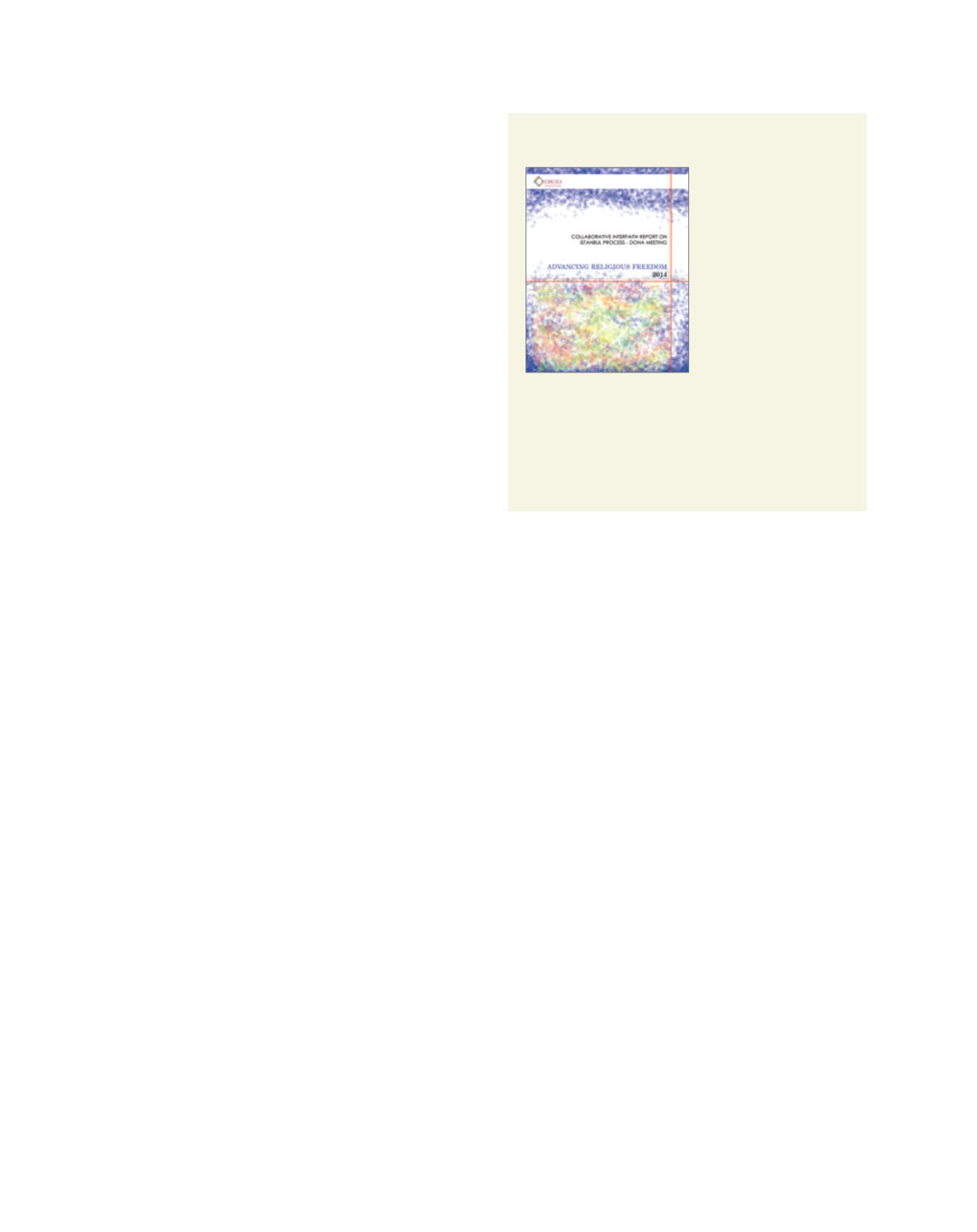

[
] 85
sion and ridicule, but to enable it to shine. The youth that have
led the movements for justice and liberation in the past years
are exactly these kinds of people, working together as Muslims,
Jews and Christians for justice and the liberation of all people.
There are some practical steps that need to be taken to bring
interfaith awareness to educational encounters. We need to
develop all of our curricula – and not just religious studies – to
cater to living in a world of difference by equipping teachers
with the necessary skills to read these texts and bring to bear
real-world examples of living in communities of multiple faiths.
Moreover, we need to engage in research and collaborative
projects for the common good of communities of multiple faiths.
Debating dialogue
The following prescription of identity is attributed to the
Hasidic rabbi Menachem Mendel (1787-1859):
If I am I because I am I,
and you are you because you are you,
then I am I
and you are you.
But if I am I because you are you
and you are you because I am I,
then I am not I
and you are not you!
The suggestion here is that our sense of self – our sense of
who we are – cannot come from any mockery or putting
down of others. We see that suggestion again in the verse from
the Qur’an that reminds Muslims of the caution from God:
“O you who believe! Let not a people deride another people.
Perhaps they are better!”
3
In interfaith communication, disparagement and a sense of supe-
riority would be sure-fire guarantees of failure. Our sincerely held
faiths are of vital importance to each of us because they direct
us to the essence of who we are and what we are about. Vitally
important, too, is the desire we each have to follow truthfully
in our faith. This is not to be mocked. But there are many who
have cautioned as to possible dangers. Writing with a dry sense
of humour in his novel
Lake Wobegon Days,
Garrison Keillor
described communities of people who dissected teachings, each
sect striving to be purer and purer adherents, until “having tasted
the awful comfort of being correct” they could look down on
those who had not reached that state. There are, though, power-
ful goals for all to strive for and these direct us beyond that kind
of complacency. Thomas Merton was an American Catholic and
a Trappist monk. He spoke of “the mystery of the freedom of
divine mercy which alone is truly serious.”
An important part of interfaith understanding is renew-
ing our joint achievements from the past. Our ancestors have
achieved much in the past in being able to create the infrastruc-
ture of our faiths based on mutual learning. In the medieval
period they have been open in learning from the experiences
of each other’s faiths. These achievements surely need to be
celebrated and acknowledged in any new interaction that takes
place today – for example the spirit of
convivencia
that was
achieved in Islamic Spain and the removal of
dhimmi
status for
the Jews of Yemen based on a saying of the prophet of Islam in
what is called by Muslims
Israiliyat
literature.
4
The important point is to remember that there are parallels
in religions both in time and space. We can call this approach
of finding parallels ‘transversal fractals’. This would denote the
similarities across time and in the present experience of lived
religion between religions like Islam, Judaism and Christianity.
As the former Archbishop of Canterbury, Lord Rowan
Williams advises, we should compare like with like in each
religion and should not ‘compare apples and oranges’. We
compare the best manifestation and expression with each other
in dialogue. And likewise we would like to suggest extending
from the Archbishop’s advice that we make spaces available for
debate to take place between those of religious attitudes that
would like to emphasize differences in a more critical debate
paradigm in order to convert the other. Without looking down
upon the people of mission and debate among our co-religionists,
and without a sense of superiority in relation to them, we provide
them space for expressing their strongly held convictions. After
all, religion is about convictions. Convictions can be historicized
by some of us but others rather choose to live in the present of
convictions, and that attitude of religiosity has as much if not
more of a right for expression than those of us who prefer to
historicize our convictions and hence relativize them. It can only
lead to mutual enrichment across faith boundaries if we are able
to make space for the expression of our religious compatriots as
well as those of other religious adherents.
The interfaith community at large wholeheartedly welcomes
this United Nations Educational, Scientific and Cultural
Organization publication of
Agree to Differ
to celebrate the
International Decade for the Rapprochement of Cultures (2013-
2022). We hope that our support in this timely effort is received
and recognized as a collective voice of the faith communities
around the world that stand for peace, understanding and justice.
Advancing Religious Freedom
This report was written in collaboration with interfaith scholars from
different religious traditions from around the world. It documents the
discussions that took place at the Istanbul Process Meeting 2014 at
Doha to discuss the implementation of UNHRC Resolution 16/18.
It was a rare gathering hosted by DICID, consisting of interfaith
practitioners with representatives from UN institutions. An attempt was
made to develop a common vocabulary about “Religious Freedoms”
based on diverse institutional, cultural and religious experiences.
Image: DICID
A
gree
to
D
iffer

















